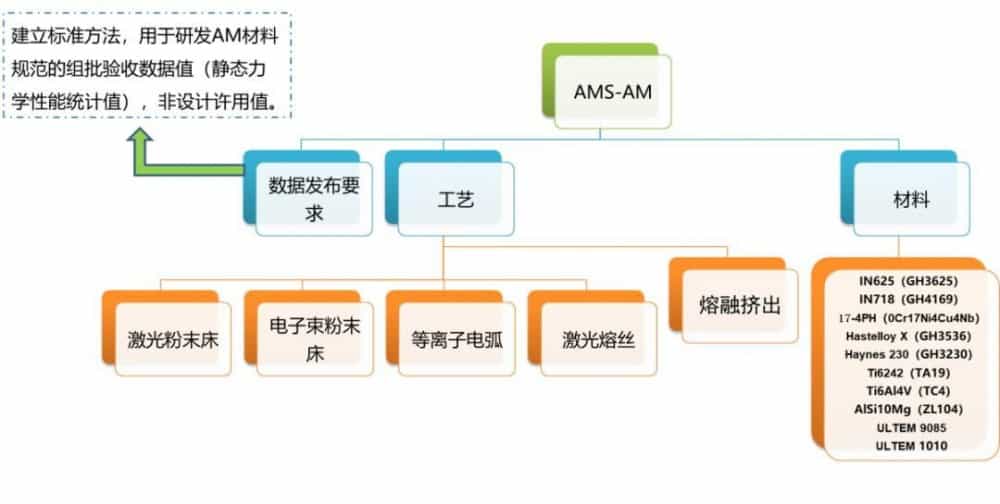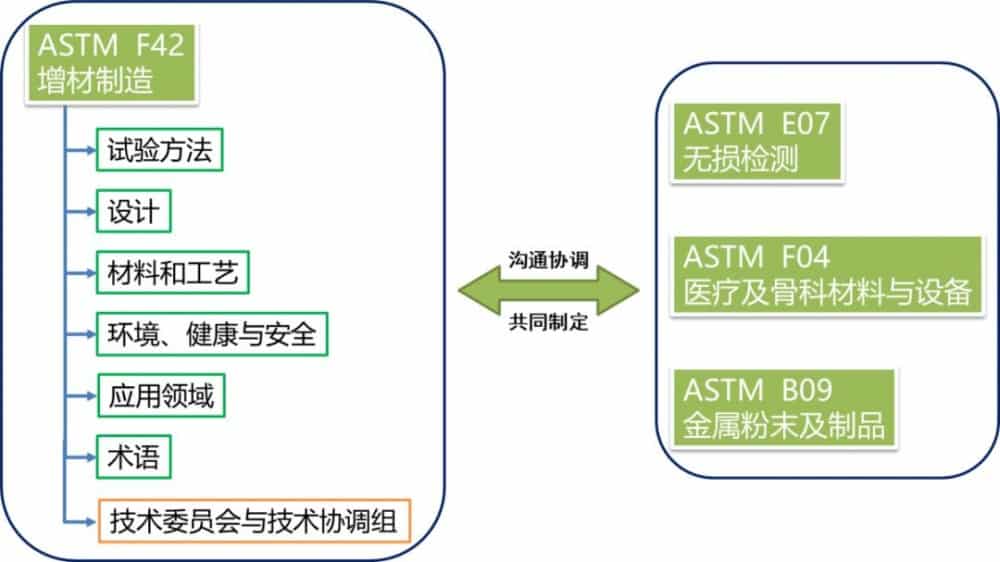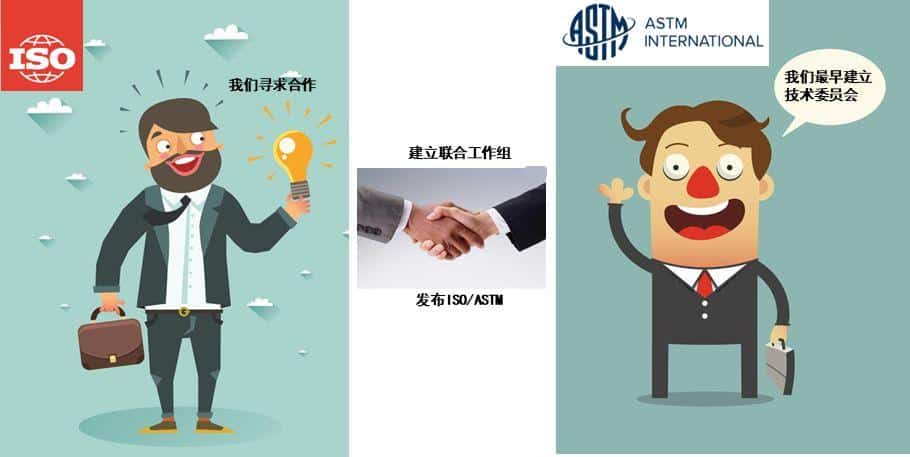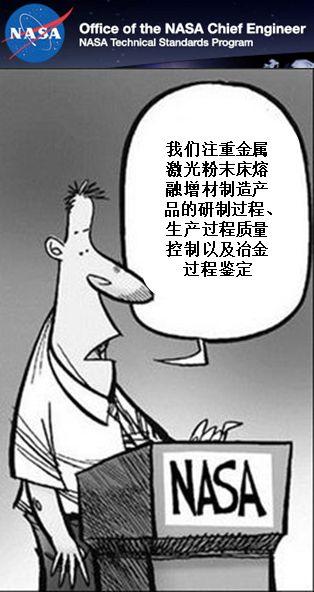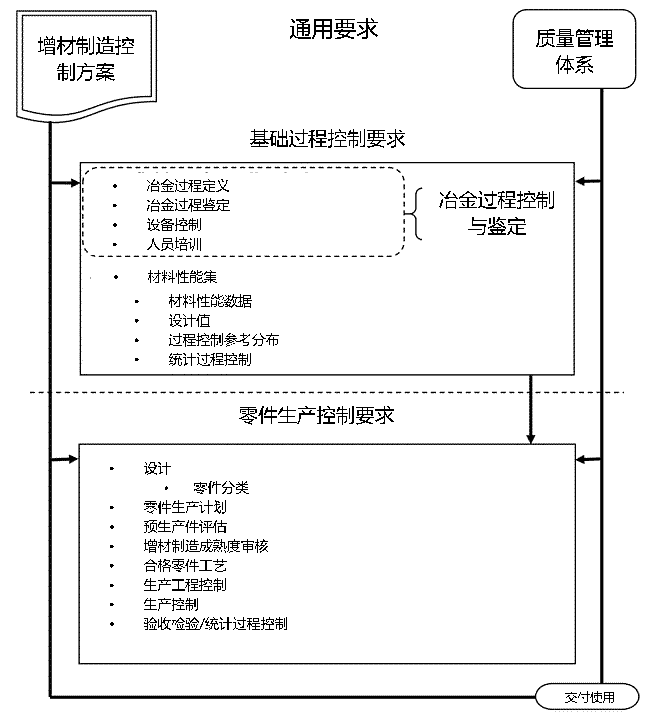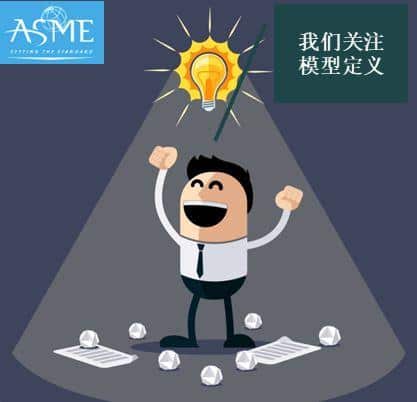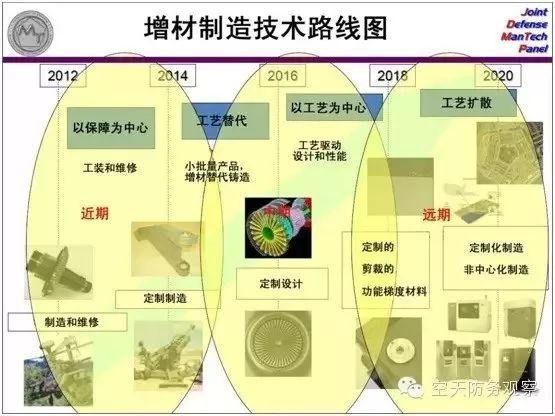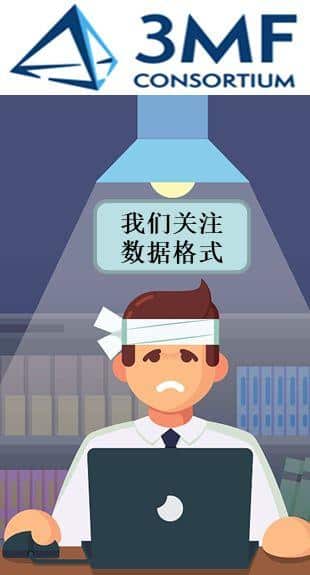In recent years, additive manufacturing applications in the aerospace, medical, mold and other show explosive growth, weight loss in structure, performance optimization, and other aspects of the advantages of customization has become increasingly prominent, but as an emerging technology, and its products can The realization of engineering application and the expansion of the industrial scale mainly depend on whether the product quality can meet the requirements of users and whether it can improve the overall comprehensive benefits of the product application field (including many aspects such as economy and performance). Therefore, systematic, full-process, and standardized standards are needed to ensure product quality, improve economic benefits in the application field, and lead and regulate the sustainable and healthy development of the industry.
The lack of standards has always been a major problem in the application of additive manufacturing engineering and industrial development. This article will explain it in detail based on the progress of standardization in developed countries in Europe and America.
SAE Standard: The earliest additive manufacturing standard
In 2002, the first additive manufacturing technology standard AMS 4999. In 2011, it was revised to AMS 4999A, and the standard name was changed to "Ti6Al4V titanium alloy direct deposition parts-annealed state".
In July 2015, SAE established the AMS-AM technical committee to prepare and maintain aerospace materials and process specifications and related technical reports related to additive manufacturing . In October 2015, in response to special certification requirements for key aerospace applications, the Federal Aviation Administration (FAA) commissioned SAE to develop additive manufacturing technology standards to support the FAA to develop AM material certification guidelines. The main objectives of AMS-AM include:
As of now, SAE has issued and is developing a total of 30 standards , involving laser and electron beam powder bed melting, plasma arc fuse, laser fuse, laser direct deposition, material fusion extrusion process, IN625 (GH3625), IN718 (GH4169 ), 17-4PH (0Cr17Ni4Cu4Nb), Hastelloy X (GH3536), Haynes 230 (GH3230), Ti6242 (TA19), Ti6Al4V (TC4), AlSi10Mg (ZL104), ULTEM 9085, ULTEM1010 and other materials.
ASTM: The earliest technical committee for additive manufacturing
ASTM established ASTM F42 in 2009, which was the earliest standardization association of the Additive Manufacturing Technical Committee.
Its main goal is to formulate characteristics and performance standards, test methods and procedure standards in the fields of additive manufacturing materials, products, systems and services, and promote the promotion of additive manufacturing technology and industrial development.
At present, the committee is composed of more than 400 technical experts from more than 20 countries , and its work is coordinated with other ASTM technical committees and national and international organizations with mutual or related interests. In 2012, ASTM F42 released the F2792-12a standard for additive manufacturing terminology, and in 2015 cooperated with ISO to revise the standard and released the first ISO / ASTM joint standard to promote the additive manufacturing technology and industrial development. The terms and definitions in are regulated.
ASTM F42 has established a total of 6 professional technical committees, including F42.01 test methods, F42.04 design, F42.05 materials and processes, F42.06 environment, health and safety, F42.07 application areas (involving aviation, aerospace, Medical, heavy machinery, marine, electronics, construction, oil and gas, consumer goods), F42.91 terminology, and the F42.90 executive committee and F42.95 technical coordination group established for association operation and cooperation with ISO / TC 261.
ASTM F42 is also responsible for coordinating with ASTM's internal technical committees (including ASTM B09 Metal Powder and Products Technical Committee, ASTM E07 Nondestructive Testing Technical Committee, ASTM F04 Medical and Orthopedic Materials and Equipment Technical Committee, etc.) to jointly develop additive manufacturing standards to Form a complete standard system for additive manufacturing.
Up to now, ASTM F42 has issued and is developing a total of 50 standards ; ASTM E07 is carrying out "Guidelines for Nondestructive Testing of Additive Manufacturing Metal Parts for Aerospace" and "Guidelines for Online Monitoring of Metal Additive Manufacturing Aerospace Parts During Forming" Standard preparation; ASTM F04 is carrying out "Evaluation Guide for Removal of Additive Manufacturing Residues in Powder Bed Melt Preparation of Medical Products".
ISO: greatly improve the scientific, rational and efficient of the additive manufacturing standards
The International Organization for Standardization (ISO) created the ISO / TC 261 Additive Manufacturing Standardization Technical Committee in 2011. Its scope of work is: standardization in the field of additive manufacturing (AM), involving related processes, terms and definitions, and process chains (Hardware and software), test procedures, quality parameters, supply agreements and all basic common technologies . ISO / TC 261 signed a cooperation agreement with ASTM F42 when it was founded, and jointly carried out standardization work in the field of additive manufacturing technology. In 2013, ISO / TC 261 and ASTM F42 jointly issued a "Joint Plan for the Development of Additive Manufacturing Standards," which included a common structure / hierarchy of AM standards to enable projects initiated by either party to be realized. consistency. The additive manufacturing standard setting plan is considered to be a dynamically updated document that will be regularly reviewed and updated by ISO / TC 261 and ASTM F42. In 2016, the structure was revised again.
Based on the "Additive Manufacturing Standards Development Joint Plan", ISO / TC 261 and ASTM F42 have identified potential high priority candidate lists for joint AM standard development as follows:
After confirming the project, ISO and ASTM determined the specific procedures of how ISO / TC 261 and ASTM F42 cooperate and cooperate in a practical sense according to the agreement reached between them, including: the establishment of joint working groups and joint steering groups, how Convene a joint working group meeting, requirements of the standard preparation process, standard review and voting procedures, standard text structure, and how to complete existing and subsequent standard projects. These aspects have greatly improved the scientificity, rationality and efficiency of formulating additive manufacturing standards worldwide, and promoted the improvement of the global additive manufacturing standards system.
At present, there are more than 40 standards in the preparation of ISO TC261 and ASTM F42, which carry out standardization work in many aspects such as materials and processes, test methods, design, and safety protection of additive manufacturing, and further improve the standard system of additive manufacturing. Standardization has played an important role and significance.
NASA: Released standards for additive manufacturing products in the aerospace industry
NASA NASA has formulated and released MSFC-STD-3716 and MSFC-SPEC-3717 by Marshall Aerospace Center for the requirements of aerospace for the application and quality stability of additive manufacturing products.
MSFC-SPEC-3716 is a metal laser powder bed melting additive manufacturing aerospace product standard that specifies the basic requirements of additive manufacturing process control and key control points in development and production (as shown)
Through MSFC-STD-3716, NASA realized:
• Define the basic and part production process control to manage the risks associated with the current state of L-PBF technology;
• Provide certified product organization (CEO) and authorities with product consistency certificates to assess the risk and control compliance of each L-PBF part.
MSFC-SPEC-3717 Metal Laser Powder Bed Melting Additive Manufacturing Metallurgical Process Control and Qualification Specification is used to define the basic process control program requirements in L-PBF, including:
• L-PBF metallurgical process definition and identification requirements;
• Requirements for maintenance, calibration and identification of equipment and facilities;
• Operator training requirements.
NASA believes that AM is a unique material product form, and requires metallurgical process identification on each AM equipment to ensure the quality stability and traceability of AM products .
Germany: Focus on the whole industry chain of additive manufacturing and aerospace application standards
Germany has always been at the forefront of the world in terms of additive manufacturing technology and equipment research. The German Aerospace Standards Association (DIN) and the German Institute of Engineers (VDI) have formulated corresponding standards for the development and application of additive manufacturing technologies.
— VDI has issued and is currently developing up to 20 standards, involving definitions of terms, material identification, quality control, design guidelines, operational safety, material data sheets, etc. DIN is the established aerospace standardization association, and the secretariat of ISO TC 261 falls on DIN.
— In addition to actively participating in the formulation of relevant standards of the International Organization for Standardization and the European Organization for Standardization, DIN has also developed laser powder bed fusion additive manufacturing equipment acceptance, operator identification, powder materials, based on Germany ’s own technology and application development needs. Standards such as parts inspection and forming technical specifications are being developed for mechanical properties of shaped products, non-combustion pressure vessels, arc-directed energy deposition, and guidelines for the use of metal materials. More than 10 standards have been issued and are currently being developed.
ASME: Focus on the design, manufacturing and quality control of additive manufacturing parts
ASME Y14.46-2017 (trial) is a trial standard on the definition of additive manufacturing products issued by the American Society of Mechanical Engineers for the characteristics of additive manufacturing technology. This standard regulates the terms and characteristics definitions unique to additive manufacturing technology. , And recommend a unified specification in the product definition data set and related documents. The standard mainly defines the definition of geometric features of additive manufacturing products; the definition of design features such as lattice structure, gradient structure, and complex geometric structure; the position and orientation of parts, layer thickness, scanning path, support structure, furnace samples, etc. Definition of process characteristics; and specification of product data packages. The standard can be used to characterize the details of the design, manufacturing and quality control of additive manufacturing parts.
DNV ・ GL: Focus on the identification and certification of additive manufacturing products
DNV ・ GL is a group company after the merger of DNV and GL, and one of the world's leading classification societies. Regarding the use of additive manufacturing in maritime, in 2017, DNV ・ GL released the standards for the identification and certification of additive manufacturing materials and parts. Approval and approval of additive manufacturing materials, products and components through systematic identification and certification methods Certification provides a basic framework to promote and regulate the application of additive manufacturing in ship development and production. In 2018, DNV ・ GL also released the additive manufacturing manufacturer approval procedure standard, which regulated the requirements of the additive manufacturing manufacturer ’s approval request, document requirements, approval scope and restrictions, approval testing, quality control and process verification.
PRI: Focus on the audit of additive manufacturing suppliers
Since its establishment as a non-profit trade association in 1990, PRI has become a global authoritative body for the audit management of industry management projects and management special process certification projects. The Nadcad Special Process Certification Project is one of PRI's key audits in the aerospace field. In view of the development and application of metal powder bed melting additive manufacturing technology in the aerospace field, PRI released the laser and electron beam metal powder bed additive manufacturing audit guidelines in 2017, which were jointly established by technical experts from industry and government. The establishment of certification requires auditing and certification of suppliers, which provides a standardized method for quality assurance and reduces repeated audits in the aerospace industry.
UL: Focus on additive manufacturing health and safety
UL is short for Underwriter Laboratories Inc. The UL Safety Laboratory is the most authoritative in the United States and the largest private institution engaged in safety testing and appraisal in the world. It is mainly engaged in the safety certification of products and the operation of safety certification business, thinking that the market obtains products with a relatively high level of safety to ensure personal safety Health and property safety. In response to the in-depth application of additive manufacturing engineering and the expansion of the consumer product market, UL released the 3D printing and additive manufacturing equipment compliance audit guidance document in 2015. This document is a document that helps manufacturers identify and add additives Guidelines for safety standards and related regulations for manufacturing equipment (including 3D printers). In 2017 and 2019, UL released the safety management audit of additive manufacturing facilities and the test and evaluation method standards for particulate matter and chemical substance emissions of 3D printers to provide guidance for ensuring the safety of additive manufacturing production and user health and safety.
U.S. military: focus on additive manufacturing and maintenance support
As early as 2011, the U.S. Department of Defense based on the research results of the U.S. Defense Analysis Institute and regarded the additive manufacturing technology as the focus of the U.S. military ’s focus on technology. Leading the release of the US Department of Defense's additive manufacturing technology roadmap (see photo). The roadmap shows that the recent application of additive manufacturing technology to US military equipment is centered on equipment support, remanufacturing related parts and tooling, and performing equipment maintenance.
For the development and application of additive manufacturing technology, the US Army Research and Development Command (RDECOM) has carried out analysis and research on equipment applications and formulated a roadmap for additive manufacturing applications. The roadmap points out that the application of additive manufacturing in the equipment field has three major stages, namely: rapid processing and processing, substitution / replacement (replaces traditional manufacturing processes), innovative design (design based on additive manufacturing), and finally realizes part replacement and process Substitution, product substitution.
It can be seen that the first-stage application of additive manufacturing in the military field is mainly focused on equipment support, forming manufacturing and maintenance capabilities. In view of this, the US Department of Defense issued the "Technical Specification for Direct Metal Deposition (DDM) for Remanufacturing, Repair, and Coating Recoating" in 2013, and made its first revision in 2014. The standard regulates the three normative processes of material process development and verification process, part repair process development process, and part repair process verification process, laying the foundation for the application of additive manufacturing in the field of equipment support.
Software developers: focus on data formats
In April 2015, 7 companies including Microsoft, HP, Shapeways, Autodesk, Dassault Systèmes, Netfabb, and SLM Solutions established the 3MF alliance and began to promote a dedicated, dedicated design process that can be used throughout the entire additive manufacturing design process. Unify the file format in order to get through many links from design to 3D printing and avoid loss of information and data during this process. Compared with the popular 3D printing file formats STL and OBJ, the 3MF format has obvious advantages. For example, it can provide more information in a file, has scalability, supports conversion, and object reference. On July 1, 2015, 3D Systems, Stratasys, Materialise, and Siemens PLM Software also joined the 3MF alliance to jointly develop and publish standards. At present, 3MF has released 5 standards including 3D printing format, materials and attributes, lattice structure, slices, and extensions of products to regulate the file format for additive manufacturing.
In addition, foreign NIST, IEEE, IPC, AMMI, ABNT and other institutions have also conducted research and formulation of standards in the fields of metrology, testing, printed circuit boards, consumer 3D printing, medical treatment, etc. I will not repeat them one by one.
Source of this article: Rongrong Research Institute.



